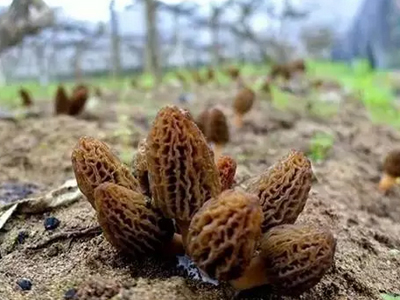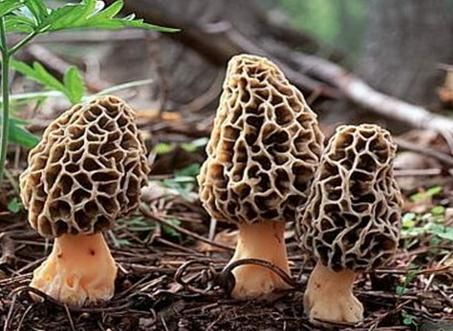Once thousands of yuan per jin but now more than a hundred yuan baby fish how to "swim" out of the predicament?

Four years ago, the price of a baby fish was 1500 yuan per jin. Now, it is only more than a hundred yuan per jin.
A few days ago, a tourist ate a meal of baby fish at an ordinary restaurant in Guilin at a price of 1500 yuan per jin. A 3.3jin baby fish, with a total price of nearly 5000 yuan, is called "sky-high baby fish" by the media.
Four years ago, it was not unusual for a baby fish to sell for 1500 yuan per jin, because "sky-high price" was once one of its eye-catching labels.
Tang Jie, director of the technical promotion station of the Animal Husbandry and Aquaculture Development Promotion Center in Guiding County, Qiannan Prefecture, told reporters that when the baby fish in Guiding was the hottest in 2012, the price per jin reached 2000 yuan. Four years later, in Yanxia Township, Guiding County, which is known as the "hometown of baby fish in China," the retail price of a jin of baby fish has dropped to about 200 yuan.
From the beginning of 2016 to April 18, taking into account the peak sales season during the Spring Festival, Su Zhilong, a farmer in Mattatun Village, Yanxia Township, Changming Town, Guiding County, completed this year's fifth baby fish business-three baby fish, a total of 20 jin, with a price of only 100 yuan per jin.
Lan Hongming, general manager of Guizhou Jinjiang Giant Salamander Technology Co., Ltd., who is the "leader" of Guizhou baby fish and has a 20-year history of breeding, sits in the office of Kempinski Building in Guiyang. Outside the office, he is noisy and busy, but his situation is full of crisis.
"this is a difficult time for dollfish," he told reporters. "
Qu Jiyong has his doll fish noodles in his hand.
The beginning
Build a domestication and breeding base
Yanxia Township of Guiding County is rich in baby fish resources. The arrival of Guizhou Jinjiang Giant Salamander Technology Co., Ltd. is the beginning of the "brilliant history" of baby fish here.
In 2004, Guiding County introduced Guizhou Jinjiang Giant Salamander Technology Co., Ltd., and built the largest wild baby fish domestication and breeding base in Yanxiaxiang. In 2006, the title of "hometown of baby fish in China" added confidence to the domestication and breeding of baby fish in Guiding County.
Three years later, Jinjiang Company succeeded in artificial breeding of baby fish, and Guiding County decided to support the baby fish industry locally.
"A fish fry costs 980 yuan, but for the villagers, there are not many people who dare to raise it," says Tang Jie. "later, it was the leading cadres in the village who took the lead in lighting the fire."
Zou Xian, director of the Yanxia Branch of the Rural Credit Cooperation Association of Guiding County, told the reporter that in the years when "baby fish" had the most loans, he had to run more than 20 farmers every time he came to the countryside.
Qu Jiyong, chairman of Yanxia doll fish imitation ecological breeding farmers' professional cooperative and general manager of Qianmeng Agricultural Science and Technology Co., Ltd., in Guiding County, was an early member of the poverty alleviation team of "baby fish".
In 2008, he also worked in Shenzhen, experienced eight entrepreneurial failures such as planting bamboo shoots, figs and cherries, and owed tens of thousands of yuan in debt. Bent on starting a business, when he heard the news, he returned to his hometown from Shenzhen and asked his family to borrow money and credit union loans. He scraped up 40,000 yuan and bought 40 fish fry.
The bought fish fry are placed in a plastic bucket 3 meters long and 1.5 meters wide and placed at the back of the house.
There is even less fastidious: some farmers directly take a basin and put it under the bed.
Three years later, qu Jiyong's small fry has grown into about 4 jin. At that time, the price of fish was about 1500 yuan per jin. Qu Jiyong sold all 40 fish. As soon as he changed hands, the original 40, 000 yuan became 200000 yuan.
Guiding doll fish deep processing products list.
Brilliant
Small foreign buildings in every household
The period from 2008 to 2012 is the "peak period" of Guiding dollfish. Qu Jiyong said, "if you raise two baby fish, you can become a household of ten thousand yuan."
In 2007, Guiding County launched 49 farmers in Yanxia Countryside, raising a total of 980 baby fish. Over the next few years, these two figures increased year by year.
The expansion of the scale has attracted consumers from all over the country. In particular, with the "hometown of China Baby Fish" plaque settled in Guiding County, "group publicity" brought the popularity spread, customers from inside and outside the province, an endless stream.
Qu Jiyong's mobile phone has almost become a hotline, receiving inquiries from all over the country every day. When he received orders from Beijing and Shanghai, qu Jiyong packed the baby fish in foam boxes and sent them out with ice cubes. In the province, when the goods were ordered in the morning, qu Jiyong stayed at home. In the afternoon, Mercedes-Benz and BMW cars opened to pick up goods from Guiding County and Guiyang City.
Qu Jiyong said that before everyone raised baby fish, Yan Xiaxiang was just a poor place where "girls from outside the village did not want to marry in."
In the information pictures provided by the Animal Husbandry and Aquaculture Development Promotion Center of Guiding County, before 2008, the road to the countryside was lined with tile houses and many dilapidated huts.
After stepping into the "baby fish era", it took almost only three years for every household to live in a modern small foreign-style building, and all kinds of cars were parked on the open space in front of the door.
At the beginning of his business, qu Jiyong only drove a van. Now what is left at home is a brand-new car.
In order to better breed baby fish, many large farmers in Guiding County have set up imitation ecological baby fish breeding farms.
Turning point
Market prices have fallen several times in a row
In 2010, qu Jiyong decided to expand the scale.
Qu Jiyong rented a piece of land with a better ecological environment and built an imitation ecological breeding farm with a loan of 150000 yuan from the rural credit cooperatives. This imitation ecological farm draws lessons from the experience inspected by qu Jiyong in Shaanxi and Sichuan, and completely simulates the living environment of wild baby fish. After two years of exploration, the survival rate of baby fish bred by qu Jiyong has reached more than 90%.
Because of the maturity of breeding technology, the price of doll fry has dropped from 980 yuan at the beginning to 300 yuan per tail.
In 2012, when baby fish was at its peak, qu Jiyong wrote in Qzone: "maybe in a few years, everyone will be able to eat baby fish."
There's nothing wrong with his hunch.
In 2013, the market price of baby fish fell to 500 yuan to 800 yuan per catty; in 2014, the price fell again, to about 300 yuan.
In 2015, buy a 5-jin baby fish on the market for only about 1000 yuan, at a price of 200 yuan per jin.
In four years, the unit price of doll fish fell from 2000 yuan per catty to 200 yuan per catty, which caught the farmers unprepared. Everyone was jubilant and immediately became "worried".
When the market price was still 200 yuan per jin, some farmers sold their baby fish cheaply at a low price of 180 yuan per jin, packed their bags and went out to work again.
Dilemma
165000 fish for sale
- Prev

"Internet + interplanting mode" makes Morchella have no shortage of market.
"Internet + interplanting mode" makes Morchella have no shortage of market.
- Next

The female village official led the villagers to grow Morchella to explore the way to get rich.
The female village official led the villagers to grow Morchella to explore the way to get rich.
Related
- A course of planting techniques and methods on how to grow carrots
- How to plant the latest tulips?
- Is it better to pick tea in the morning or in the afternoon? When is the best time for tea to be picked? what is the third or fifth tea?
- Launch Yuanxiao Happy combination Haocha + Tea Yuan healthy Taste
- Penghu Tourism "Fireworks 20 Parade with You"
- 2022 West Lake Happiness holds "Digital Revitalization Voucher" and draws iphone13 and laptop.
- Banqiao Fuzhou social houses are designed to change start-up combined with police elimination to create a safe and livable environment
- The convenient measure of "mechanical weeding" in Xinbei has been abused and the Agriculture Bureau has imposed heavy penalties on the illegal land consolidation.
- Changgeng University Joins Hands with Four Memory Factories to Rescue Memory Talent Shortage
- The list of Taiwan's top 100 MVP managers is listed by the Director-General of the Farmers' Association of Sanxia District.

